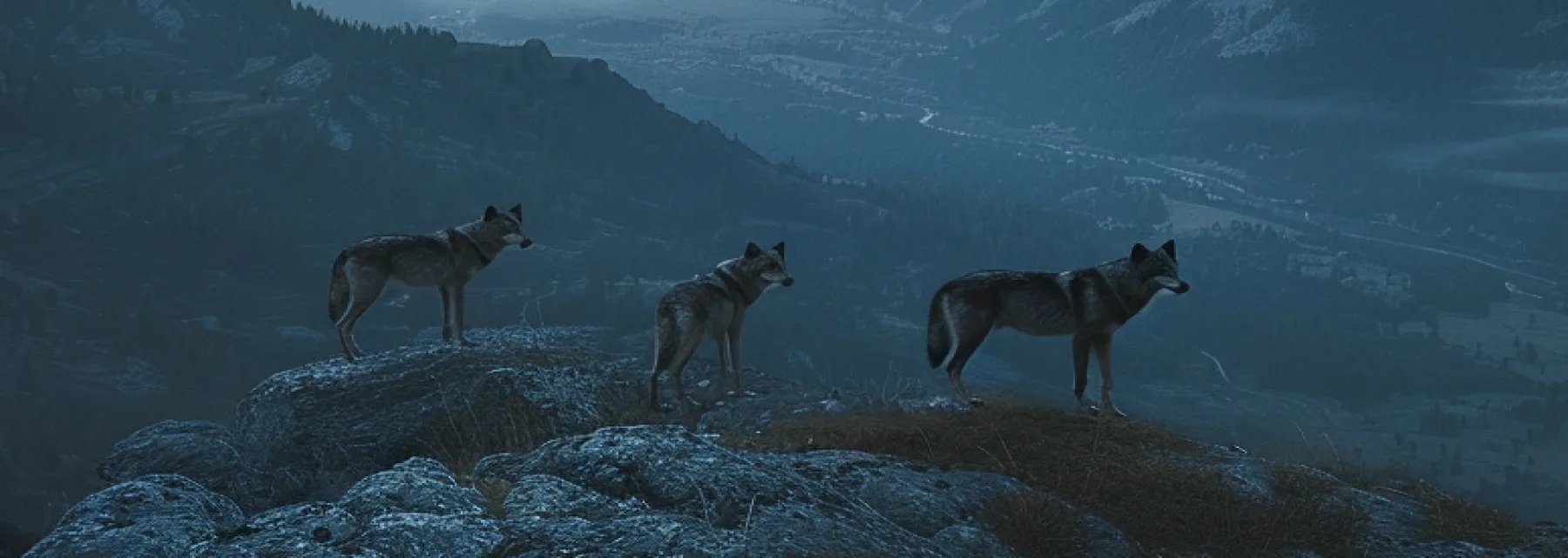Explanation of Lycans and Werewolves
A Lycan is a fictional creature often portrayed as a humanoid werewolf in modern fantasy and horror fiction. The term “Lycan” is derived from lycanthropy, the mythical ability of a human to transform into a wolf or wolf-like creature. Lycans are typically depicted as having more control over their transformations and exhibiting heightened intelligence and strategic thinking compared to traditional werewolves.
The term “Lycan” is derived from “lycanthropy,” which originally referred to the mythical ability of a human to transform into a wolf or wolf-like creature.
Mythology, Folklore, and Popular Culture
Lycans are not as prevalent in mythology and folklore as traditional werewolves. The concept of Lycans as a distinct species of werewolf is a relatively modern invention, popularized primarily through modern fiction, such as movies, books, and video games.
In contrast, werewolves have a much longer and broader presence in mythology and folklore worldwide. Stories of humans transforming into wolves or wolf-like creatures date back centuries and are found in cultures across the globe, from European folklore to Native American legends to African myths.
The Key Differences Between Lycans and Werewolves
There are 6 in total, and we will cover all of them.
- Origins and terminology are not the same;
- Transformation control is better in lycans than werewolves;
- Appearance – lycans are more humanoid than werewolves;
- Behavior – lycans are more intelligent in traditional depictions;
- Cultural symbolism – similar, yet not identical;
- Control over humanity – werewolves tend to struggle with it a little more than lycans.
Origins and Terminology
| Lycans | Werewolves |
| The term “Lycan” is often associated with a specific breed of werewolf, originating from the movie “Underworld” and its sequels. | Werewolves are a broader category of shape-shifting creatures found in various mythologies and folklore worldwide. |
Transformation Control
| Lycans | Werewolves |
| Lycans are typically depicted as having more control over their transformations, being able to shift between human and wolf forms at will. | Werewolves often have less control over their transformations, with their changes triggered by external factors like the full moon or intense emotions. |
Appearance
| Lycans | Werewolves |
| Lycans tend to have a more humanoid appearance in their wolf form, often resembling a hybrid between human and wolf. | Werewolves typically have a more wolf-like appearance, with features such as fur, claws, and snouts resembling those of a natural wolf. |
Behavior
| Lycans | Werewolves |
| Lycans are often depicted as more intelligent and strategic, capable of reasoning and planning even in their wolf form. | Werewolves may exhibit more primal and instinctual behavior, driven by the instincts of a wild animal. |
Cultural Symbolism
| Lycans | Werewolves |
| Lycans may symbolize themes of genetic mutation, scientific experimentation, and the conflict between rationality and instinct. | Werewolves are often associated with themes of transformation, duality, and the struggle between humanity and the wild. |
Control Over Humanity
| Lycans | Werewolves |
| Lycans may retain more of their human consciousness and identity even in their wolf form, allowing them to maintain relationships and interact with humans | Werewolves may struggle more with retaining their human consciousness and identity during transformations, potentially posing a greater threat to humans. |
Behavior and Traits
Here are some common characteristics associated with Lycans.

- Intelligence and Strategy: Lycans are often portrayed as highly intelligent and strategic creatures. They possess a keen understanding of their surroundings and are capable of devising complex plans and tactics to achieve their goals.
- Social Structure: Lycans typically exhibit a strong sense of social structure and hierarchy within their packs. They may organize themselves into hierarchical societies led by alpha Lycans, who exert dominance and leadership over the pack. Subordinate Lycans within the pack may defer to the authority of their alpha and cooperate with one another to ensure the pack’s survival and prosperity.
- Monarchical System: Slightly less typical, yet very interesting variation of a social structure. We have read Trapping Quincy (by Nicole Riddley) in one breath and totally recommend that book. Imagine being a human and living among werewolves, who don’t even like you that much. Well, it all changes after she meets the mysterious Prince Caspian. But you will have to read the book to learn what happens, it’s too good to spoil it.
- Pack Loyalty: Lycans are fiercely loyal to their packmates and prioritize the well-being of the pack above all else. They form close bonds with their fellow Lycans, relying on one another for protection, support, and companionship. If you haven’t yet, we recommend reading another book by one of our favorite writers, Nicole Riddley, called “Fighting Darius” to witness this type of character development. Once a werewolf becomes a part of the lycan pack, they are bonded for life.
- Territorial Behavior: Lycans may exhibit territorial behavior, defending their territory from intruders and rival packs.
- Instinctual Aggression: While Lycans are capable of strategic thinking and cooperation, they also possess instinctual aggression inherited from their wolf-like nature. When provoked or threatened, Lycans may unleash their primal instincts, becoming formidable adversaries capable of fierce and savage attacks.
Transformation Abilities of Lycans
They definitely depend on the author. But here are the main ones.

The transformation abilities of Lycans vary depending on the specific depiction in different works of fiction, but they often possess several key characteristics:
1. Voluntary Transformation
Lycans typically have the ability to transform between their human and wolf forms at will, unlike traditional werewolves whose transformations may be triggered by external factors like the full moon or intense emotions. In most of our GALATEA stories, for instance, this is exactly the case. The characters just transform whenever they want to. This control over their transformations allows Lycans to shift forms strategically.
2. Hybrid Form
In their wolf form, Lycans often resemble a hybrid between human and wolf, retaining some humanoid characteristics such as upright posture, facial features, and hands with opposable thumbs. This hybrid form distinguishes them from traditional werewolves, which may have a more animalistic appearance.
3. Enhanced Physical Abilities
During their transformation, Lycans typically gain enhanced strength, speed, agility, and senses, surpassing those of both humans and natural wolves. These heightened physical abilities make Lycans formidable hunters and fighters, capable of overpowering their opponents with ease.
4. Rapid Transformation
Lycans may be depicted as undergoing a rapid and seamless transformation between their human and wolf forms, with the process occurring almost instantaneously or within a matter of seconds. This rapid transformation allows Lycans to adapt quickly to changing situations and environments.
5. Partial Transformation
Some depictions of Lycans show them capable of partial transformations, where they retain certain human or wolf-like features while in their hybrid form. This partial transformation may allow Lycans to blend in more easily with humans or wolves while retaining their enhanced abilities.
Lycans VS Werewolves
Let’s compare these transformation abilities to Werewolves.
| Aspect | Lycans | Werewolves |
| Controlled VS Triggered | Lycans have the ability to transform between their human and wolf forms at will, giving them greater control over their transformations compared to traditional werewolves. | Werewolves undergo transformations that are often triggered by external factors such as the full moon, intense emotions, or bites from other werewolves. |
| Voluntary VS Involuntary | The transformation of Lycans is typically voluntary, meaning they can choose when to shift between their human and wolf forms without being influenced by external factors like the full moon. | The transformation of werewolves is typically involuntary, meaning they have less control over when they shift between their human and wolf forms and may be at the mercy of external triggers. |
| Seamless VS Painful | Lycans may undergo a rapid and seamless transformation, with the process occurring almost instantaneously or within a matter of seconds. | Werewolves may experience a gradual and painful transformation, with the process taking time and causing physical discomfort as their bodies change shape. |
| Form | Hybrid Form: In their wolf form, Lycans often resemble a hybrid between human and wolf, retaining some humanoid characteristics while possessing enhanced physical abilities. | More Animalistic Appearance: In their wolf form, werewolves often have a more animalistic appearance, resembling natural wolves with fur, claws, and snouts, and lacking some of the humanoid characteristics seen in Lycans. |
Origins of Lycans in Popular Culture
The origins of Lycans as a distinct concept in mythology and folklore are primarily rooted in modern fiction rather than ancient mythologies or traditional folklore.
The specific idea of Lycans as a separate species or breed of werewolf is a relatively recent invention, popularized in modern fantasy and horror fiction.
One of the most significant contributions to the concept of Lycans comes from the “Underworld” film series, which began in 2003. In these movies, Lycans are portrayed as a distinct species of werewolf, genetically distinct from traditional werewolves and possessing the ability to transform between human and wolf forms at will.
The “Underworld” franchise expanded upon the lore of Lycans, depicting them as a long-standing rival to vampires in a supernatural war spanning centuries.
Outside of the “Underworld” franchise, Lycans have also appeared in other modern works of fiction, such as books, video games, and television shows, often drawing inspiration from the portrayal established in the films.
These depictions typically emphasize the Lycans’ intelligence, strength, and control over their transformations, distinguishing them from traditional werewolves.




